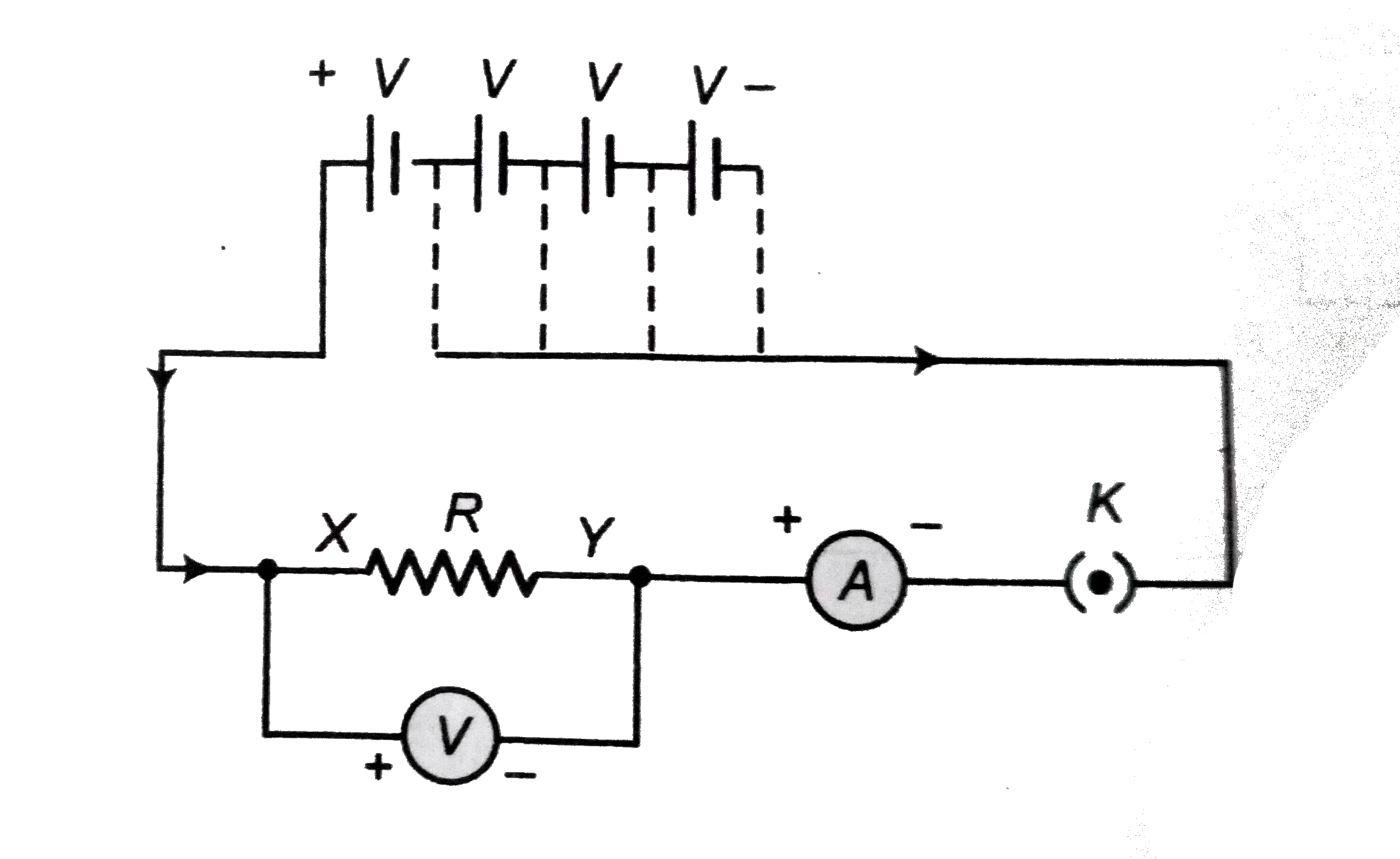State Ohm's law ? How can it be verified experimentally ? Does it hold good under all conditions ? Comment.
Ohm's law states that the electric current flowing through a conductor is directly proportional to the potential differece applied across its ends, provided the physical conditions such as temperature remains unchanged.
If v is the potential difference applied across the ends of conductor through which current/flows, then according to Ohm's law.
V∝I⇒V=IR
I=VR
where, R is the constant of proportionality called resistance of conductor at a given temperature. The experimental set up of Ohm's law is made as the circuit shown belown in the figure, consisting of a nichrome wire XY, an ammeter (A). A voltmeter (V) and four cell of 1.5 V each.

The reading in the ammeter A for the current and reading of the voltmeter V for the potential difference across the nichrome wire XY is measure and recorded in the table given below, first by using only one cell and then by the two, three and four cells in successive readings.

Calculating the ratio of V to I for each pair of potential difference V and current I. A graph is plotted between V and I and the nature of the graph is observed as shown here. The same value for V/I is obtained corresponding to one, two, three and four cells in successive reading. Also, the V - I graph is obtained as straight line that passes through the origin. The law is only valid for ohmic conductor e.g. metals.
Thus, V/I is a constant, i.e., V∝I
This verifies Ohm's law.
Ohm's law does not hold good under all conditions as it is not a fundamental law of nature like Newton's law. It is obeyed by metalic conductors only when physical conditions like temperature etc. are kept unchanged. It is not obeyed by a lamp filament, junction diode, thermistor etc. These are called non-ohmic conductor.

Topper's Solved these Questions
Similar Questions
Knowledge Check
- Question 1 - Select One
Ideal gas equation strictly obeys gas laws under all conditions of
Apressure onlyBvolume onlyCtemperature onlyDtemperature and pressure
State Ohm's law. How can it be verified experimentally ? Explain with the help of a circuit diagram. Express the result graphically.
View SolutionState Pascal's law. How can it be demonstrated?
View SolutionState Archimedas' principle. How can it be experimentally verified ?
View SolutionState and explain Lenz's law. Give one exmple to illustrate the law. How will you verify it experimentally ? Does it obey the principle of energy consevartion ?
View SolutionState the law of conservation of mass. How is it verified experimentally ?
View Solution(a) Water boils in an electric kettle in 15 minutes after being swiched on. Using the same mains supply, should the length of the heating element be increased or decreased if the water is to boiled in 10 minutes ? Why ?
Does Ohm's law hold good under all conditions ?View SolutionHow can laws of reflection be experimentally verified?
View Solution

